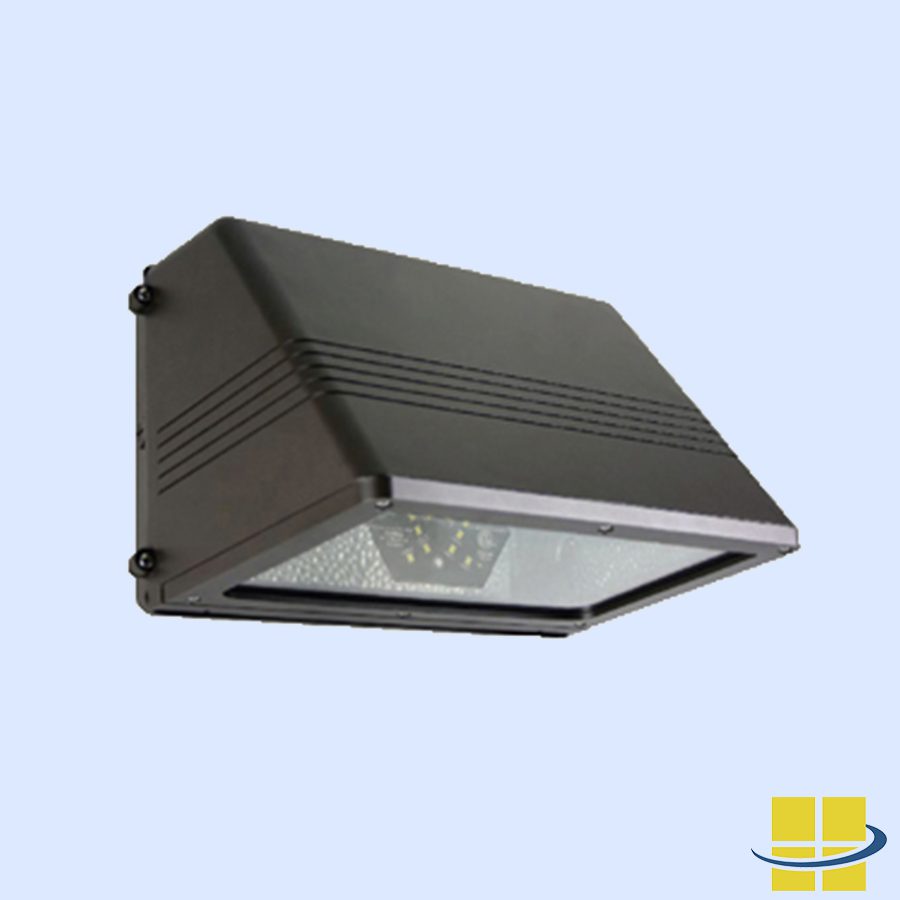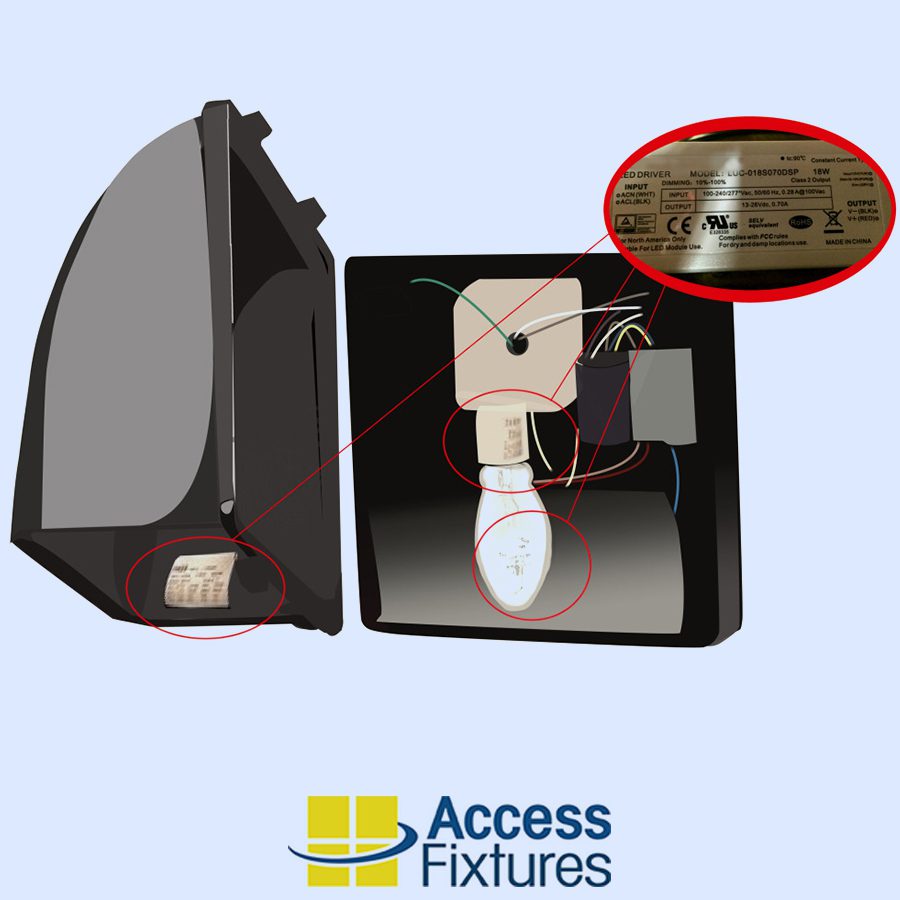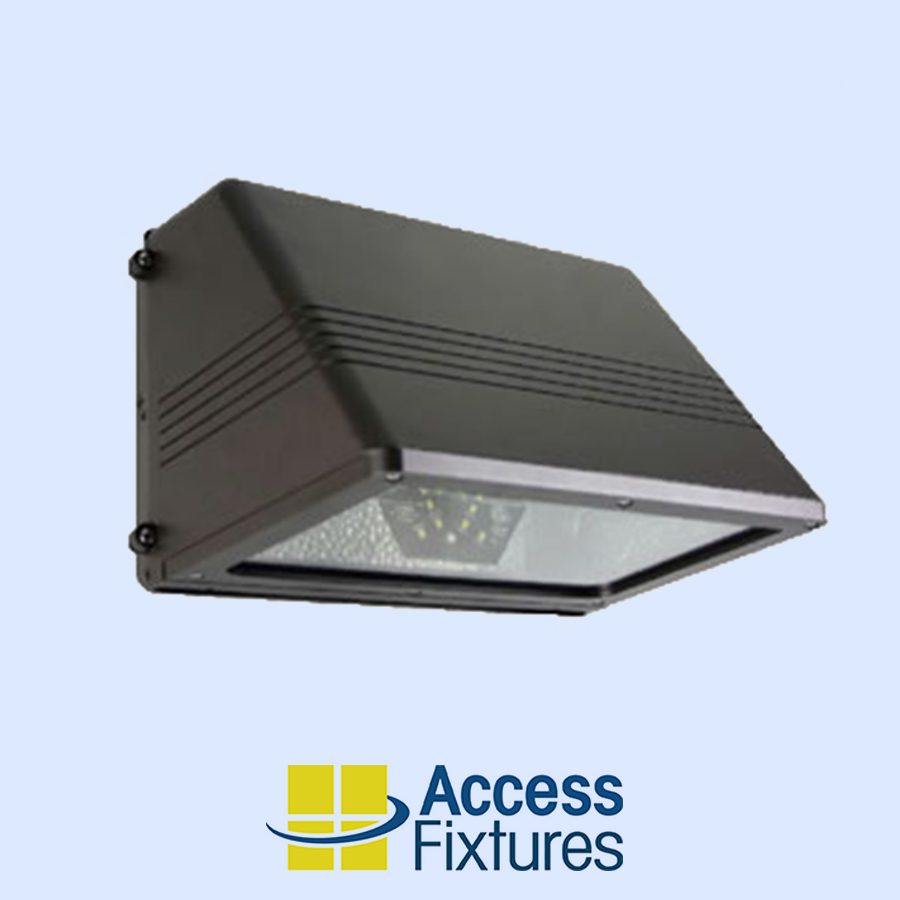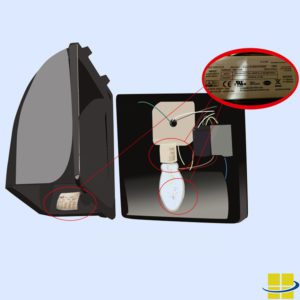 Determining the best LED equivalent wall packs for your outdated HID units can be complicated. Whether switching from high-press sodium (HPS) or metal halide (MH), there are a hundred questions to ask about wattage, delivered light, photopic and scotopic lumens, and more. To help, we have broken down and cataloged our methodology for making the right selection. If you have any questions along the way, feel free to contact us for clarification. If you’d simply rather not deal with all these calculations yourself, give us a call and we’ll take care of them for you.
Determining the best LED equivalent wall packs for your outdated HID units can be complicated. Whether switching from high-press sodium (HPS) or metal halide (MH), there are a hundred questions to ask about wattage, delivered light, photopic and scotopic lumens, and more. To help, we have broken down and cataloged our methodology for making the right selection. If you have any questions along the way, feel free to contact us for clarification. If you’d simply rather not deal with all these calculations yourself, give us a call and we’ll take care of them for you.
Confirm the Wattage and the Type of HID Lamp in Your Wall Pack
It is almost impossible to determine which LED wall pack will be the best replacement for your existing wall pack without first knowing the wattage and light source type of your current wall pack. Existing wall packs usually fall under the categories of HID or LED. HID stands for high-intensity discharge; HPS, MH, and PSMH (another form of metal halide) all fall under this umbrella. Since LED systems are so much more efficient than HID systems, and HID fixtures and LED fixtures of the same wattage will not provide the same amount of light, a watt-for-watt replacement of HID to LED will significantly increase your light levels. Knowing the wattage and lamp type of your current wall pack is the first step in determining which LED wall pack will provide the lighting you want.
Your wall pack may have the lamp type and wattage information listed in one of three places: on a tag inside the wall pack, on the ballast, or on the lamp itself. Once you have the lamp type and wattage, you can move to the next step.
While we explain the steps, we will run a mock HID-to-LED upgrade so we can use real data. Let’s pretend we’re beginning with a 250w HPS wall pack with a 2100K lamp.
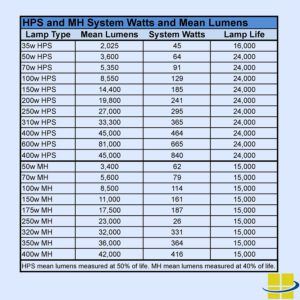 Determine the Mean Lumens Emitted by Your High-Intensity Discharge Lamp
Determine the Mean Lumens Emitted by Your High-Intensity Discharge Lamp
Mean lamp lumens is a data point that refers to a lamp’s average lumen output over the course of its life. High-intensity discharge (HID) lamps start operating with a high initial lumen output that fades over time. This is known as lumen depreciation. To account for HID lumen depreciation, the mean lamp lumen data point considers the amount of lumens emitted by an HPS lamp at 50% of its rated life; for an MH lamp, we record lumens at 40% of its rated life. Many manufacturers will have this information available if you contact them with the HID fixture model number.
Adjust Mean Lumen Output for Visible Lumens (Scotopic vs. Photopic Lumens)
Once you know the mean lamp lumens for your old light fixture, you’ll need to adjust these numbers for visibility, also referred to as visually effective lumens.
 Our eyes perceive light through a complex relationship between photoreceptors called rods and cones. It was originally believed that cones were responsible for daytime vision and rods were responsible for nighttime vision. This is still partially true. However, thanks to studies conducted at UC Berkeley, we now know the predominant difference between rods and cones is that the latter is sensitive to red, green, and a bit of blue light, while the former is more sensitive to blue light and helps open and close the pupil.
Our eyes perceive light through a complex relationship between photoreceptors called rods and cones. It was originally believed that cones were responsible for daytime vision and rods were responsible for nighttime vision. This is still partially true. However, thanks to studies conducted at UC Berkeley, we now know the predominant difference between rods and cones is that the latter is sensitive to red, green, and a bit of blue light, while the former is more sensitive to blue light and helps open and close the pupil.
Visual perception is still broken down into two categories: photopic and scotopic vision. Photopic vision occurs in high light levels and is controlled primarily by our cones; scotopic vision occurs in lower light levels and is controlled primarily by our rods. Traditionally, light was only measured and accounted for in the photopic visual range. For years, industry professionals were using this data to measure light levels; because of this, the data they were able to provide was limited and skewed. New research shows that most visual perception is actually a combined effort between the rods and cones. We refer to this new range as the mesopic region.
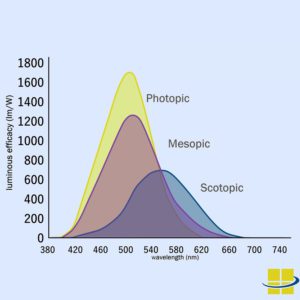 Why is this relevant to selecting an LED fixture? The most common complaint against LEDs is that they are “too bright.” Because of our rods’ sensitivity to the color blue and their strength at low light levels, we can assume that blues and whites will seem more dominant than other colors in low light. We tend to perceive the higher color temperatures of LEDs as brighter than traditional HID light fixtures, such as metal halide or high pressure sodium, when we see them at night. However, LEDs come in a variety of color temperatures, which can help account for the often-problematic disparity between photopic and scotopic vision.
Why is this relevant to selecting an LED fixture? The most common complaint against LEDs is that they are “too bright.” Because of our rods’ sensitivity to the color blue and their strength at low light levels, we can assume that blues and whites will seem more dominant than other colors in low light. We tend to perceive the higher color temperatures of LEDs as brighter than traditional HID light fixtures, such as metal halide or high pressure sodium, when we see them at night. However, LEDs come in a variety of color temperatures, which can help account for the often-problematic disparity between photopic and scotopic vision.
When switching between HID and LED, it is better to factor in both kinds of vision. The ratio between a lamp’s scotopic luminance and its photopic luminance is called the S/P ratio. A lamp with a higher S/P ratio will provide sharper vision and better color rendering. To find the actual visibility provided by a fixture, you need to determine the S/P ratio and multiply it by the mean lumens of the luminaire.
See the following table for S/P ratios. Once the S/P ratio is determined, it is time to find the visually effective lumens (VELs), also called pupil lumens or usable lumens. VELs are lumens picked up both by our rods and our cones. A quick and effective way to estimate VELs is to multiply the mean lamp lumens by the S/P ratio. In the example of the 250w, 2100K HPS, we would use the following equation: 27,000 x 0.62 = 16,740 VELs.
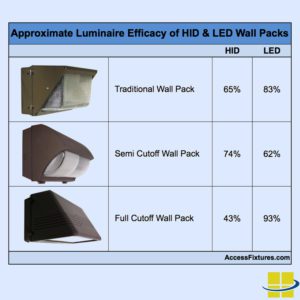 Understanding Luminaire Efficacy to Select LED Equivalent Wall Packs
Understanding Luminaire Efficacy to Select LED Equivalent Wall Packs
Now that we have the VELs of the light source, we will need to determine the luminaire efficacy. The efficacy of a light fixture is its measured ability to provide light. Manufacturers calculate the efficacy of an HID luminaire by dividing the emitted lumens by lamp lumens. The manufacturer of your wall pack will be able to provide this data.For your convenience, an estimate is provided in the following chart.
The housing style affects the efficacy of a wall pack. For example, a traditional wall pack will have greater efficacy than its full cutoff equivalent. If you’re still scratching your head about what this all means, give Access Fixtures a call or email us a picture of your existing fixture [email protected] is the best way to reach us. We’ll be able to estimate its total luminaire efficacy and guide your through the process. The efficacy of our 250w HPS wall pack is 65%.
Calculating Mean Visible Luminaire Lumens
Mean visible luminaire lumens is the average number of lumens put out by a wall pack over its lifetime. This calculation is easy. Multiply the VELs we found in step 3 by the total luminaire efficacy we found in step 4. For the customer with a 250w HID wall pack, the equation would look like this: 16,740 x 65% = 10,881 mean visible luminaire lumens.
Calculating Mean Visible Luminaire Lumens for LED
Once you know the mean visible luminaire lumens for the HID wall pack, you have to find this same figure for LEDs and compare the two. Easy enough, right?
Surprisingly, because of the differences between HID and LED technology, the calculations for LEDs are slightly different. If you’re not sure which LED fixture to use, a good rule of thumb is to cut the HID wattage in half and use that as a starting point for ideal LED wattage. For example, if you’re looking to replace a 250w HPS wall pack, the closest possible equivalent at half the wattage would be a 126w LED wall pack. Remember, though, that this method only provides an educated guess; after running the following calculations, you’ll likely want to explore different LED wattages to find a better match for your needs. Take the following steps to find mean visible luminaire lumens for the LED wall pack.
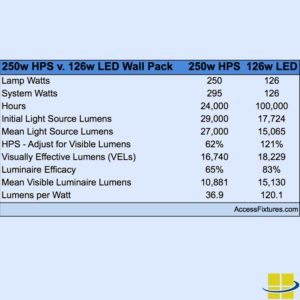 Determine the initial light source lumens. Most manufacturers will have data on initial light source lumens on record. A 126w LED array throws 17,724 initial light source lumens.
Determine the initial light source lumens. Most manufacturers will have data on initial light source lumens on record. A 126w LED array throws 17,724 initial light source lumens.
- Multiply the initial light source lumens by 85% to get the mean lumens. Keep in mind that LED fixtures sometimes use LED chips instead of lamps; for clarity, we’re using “mean lamp lumens” to refer to both styles. Also recall our earlier discussion on lumen depreciation; LEDs depreciate far less drastically than HID—so much so that an LED fixture at 85% of its rated life will perform as well as an HID fixture at 50% of its rated life. 17,724 x 85% = 15,065.4 mean lumens
- Use the S/P ratio chart to select the S/P ratio for the LED lamp. The S/P ratio for a 3000K LED is 1.21, or 121%.
- Multiply mean lamp lumens by the S/P ratio to find the VELs of the LED fixture. 15,065.4 x 121% = 18,229.13 VELs
- Use the “Luminaire Efficacy of HID and LED Wall Packs” table to determine the efficacy of the LED fixture. The efficacy of a traditional LED wall pack is 83%.
- Find the mean visible luminaire lumens by multiplying the VELs by the efficacy of the light fixture. 18,229.13 x 83% = 15,130 mean visible luminaire lumens
At this point, you should know the mean visible luminaire lumens for both the HID and LED wall pack.
Compare the Mean Visible Luminaire Lumens of the HID and the LED Fixtures to Find the Best Replacement Option
You are almost ready to shop! If we compare the mean visible luminaire lumens of your existing HID luminaire and the possible LED equivalent, we will likely find that the LED, even at half the wattage of the HID, will provide far more light than necessary. You should be able to run the numbers for lower LED wattages until you find one that provides similar mean visible luminaire lumens to the existing HID fixture.
Speak to an Access Fixtures Lighting Specialist about Choosing the Right Fixture
We don’t expect you to make all these calculations—and that’s why we’re here. Selecting LED equivalent wall packs doesn’t have to be difficult. Simply enough, we love this stuff and look forward to helping you navigate the transition from HID to LED. Give us a call at (800) 468-9925 and we’ll find you a solution!

